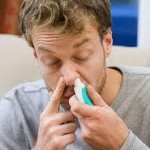Archive for December, 2014
New Year’s Eve Safety Tips
Posted by: | Comments New Year’s Eve is just a few days away. Thousands of people are making plans to celebrate the New Year at hotels, bars and restaurants. It’s important to take some cautionary steps to insure a safe celebration. The combination of high alcohol intake and relaxed inhibition can increase safety risks. Consider the following safety items while celebrating this New Year’s Eve.
New Year’s Eve is just a few days away. Thousands of people are making plans to celebrate the New Year at hotels, bars and restaurants. It’s important to take some cautionary steps to insure a safe celebration. The combination of high alcohol intake and relaxed inhibition can increase safety risks. Consider the following safety items while celebrating this New Year’s Eve.
Social Media
It’s fun sharing your latest experiences with family and friends. Realize though you are also telling many that you are not home and that your apartment or home is vacant. Most burglaries occur when people are not at home. Be careful what you decide to share and say on your Facebook, Twitter, Google+ or other social media accounts.
Hotel
If you plan on spending the night at a hotel, consider choosing a room above the 1st floor and lower than the 8th floor. Most hotel burglaries happen to rooms with easier access on the 1st floor. In case of a fire, most fire ladders can’t reach above the 7th floor. Remember to keep all doors and sliding doors closed and locked. Keep valuables locked in the hotel safe, especially when you are not in the room.
Drinking
Accept only drinks you see the bartender pour and never leave your drink unattended. Drugs such as Rohypnol the “date-rape” drug can be easily placed in your drink within seconds. If you must leave your drink, place it in the security of a close friend (buddy) or better yet, finish it before going to the restroom or dance floor. If you find your drink has been left unattended, even for a very short period of time, discard it and get another.
Get Cash Ahead of Time
Many robberies occur at public ATMs. Mostly at night, but it can happen at any time. When in need of an ATM, always go with a group of friends. Be suspicious of people that are just hanging around with no specific purpose. If it seems unsafe, choose another ATM. Make sure to cover the keypad, with your other hand, as you input your pin number. Take out only enough cash you need for that evenings celebration. You can always get more, but you can’t replace what is lost or stolen.
Uber or Taxi
Either form of transportation has its risks, but a few things you should consider when using Uber. As with all new and growing companies, Uber has had its share of issues, from passengers getting injured and questions if the owners car insurance cover the passengers inside, to alleged rapes and assaults. With any form of hired transportation that is used late at night, you may want to adhere to the following suggestions. 1) Call a trusted friend and give them the make and model of the car and license plate number before entering the vehicle. 2) Stay of the phone with your friend and update them to your location frequently. 3) Any changes or deviations from your route, inquiry with the driver why they are heading that direction. If you’re not satisfied with the answer, immediately update your friend to your present location and have them call 911. This is not an attempt as a derogatory or poor review piece concerning Uber, just safety directions that can be used with any form of paid transportation.
Following these few safety tips may make it a safer and more enjoyable New Year’s celebration. CPRescue wishes everyone a Safe and Happy New Year!!!
Nasal Spray Kills Cold Virus
Posted by: | CommentsNasal sprays can help reduce sinus congestion, but a recent study showed to have an anti-viral effect, especially against the rhinovirus, the virus responsible for the common cold. The effective compound in several over-the-counter nasal sprays is Oxymetazoline which may kill the virus that causes colds.
In this volunteered study, each person was given either a nasal spray that contained oxymetazoline or a saline solution. The participant that received the saline solutions showed no significant reduction in virus levels. While participants receiving the nasal sprays containing oxymetazoline showed a reduction in the rhino-virus levels.
Many of the popular brands such as Afrin, Dristan 12 Hour Nasal Spray, Duramist Plus and Vicks Sinex 12 Hour Nasal Spray, contain oxymetazoline.
The study cautioned that not only do these sprays reduce virus levels and provide temporary relief of nasal congestion, continual or long term use (5 or more consecutive days) could lead nasal tissue damage and chronic congestion. So use wisely.

Can I Fly With a Cold
Posted by: | CommentsIt is not recommended to travel, especially to fly, when dealing with a cold or flu. Travelling continues to add stress to your body and makes it difficult for your body to fight the illness. Flying with cold or flu can even be worse, since congestion can hurt or injure your eardrums as a result of pressure changes during takeoff and landing. Unfortunately for some of us this is not an option and travel, even when sick, must happen.
Consider the doing the following before and while you fly/travel:
Decongestant. Use a decongestant and carry a nasal spray with you to use just before takeoff and landing. Chewing gum and swallowing frequently can also help relieve pressure.
Blow Your Nose Often. It’s important to blow your nose regularly when you have a cold rather than sniffling mucus back into your head. But when you blow hard, pressure can cause an earache. The best way to blow your nose: Press a finger over one nostril while you blow gently to clear the other. Wash your hands after blowing your nose.
Sleep/Rest. Sleeping or resting when you first come down with a cold or the flu helps your body direct its energy toward the immune battle. This battle taxes the body. So give it a little help by getting as much rest or sleep when you travel.
Gargle Several Times a Day. Gargling can moisten sore throats and bring temporary relief. Try a teaspoon of salt dissolved in warm water, four times daily.
Drink Plenty of Liquids. Liquids helps prevent dehydration and helps the body flush out impurities. Hot liquids relieve nasal congestion and can soothe the uncomfortably inflamed membranes that line your nose and throat.
Remember, serious conditions can masquerade as the common cold and a mild infection can evolve into something more serious. If you have severe symptoms or are feeling sicker with each passing day, see a doctor.
Death By Sitting
Posted by: | Comments Sitting, if it was classified as a disease, would be the 3rd leading cause of death. Sedentary life styles could lead to diabetes, weight gain, depression, osteoporosis and some cancers. Sitting can also lead to “Deep Vein Thrombosis” (DVT) a blood clot that develops deep inside a larger vein – usually within the lower leg or thigh. Symptoms may include redness, swelling of the legs or pain and local tenderness. Deep vein thrombosis itself, has caused up to 100,000 deaths each year in America.
Sitting, if it was classified as a disease, would be the 3rd leading cause of death. Sedentary life styles could lead to diabetes, weight gain, depression, osteoporosis and some cancers. Sitting can also lead to “Deep Vein Thrombosis” (DVT) a blood clot that develops deep inside a larger vein – usually within the lower leg or thigh. Symptoms may include redness, swelling of the legs or pain and local tenderness. Deep vein thrombosis itself, has caused up to 100,000 deaths each year in America.
The immediate danger with deep vein thrombosis, is that part of the clot can break off and travel through the bloodstream, where it can lodge in the lungs causing a blockage in blood flow, resulting in organ damage, and in many cases death.
A blood clot that blocks the blood supply to the lungs is called a pulmonary embolism. Symptoms may include trouble breathing, low blood pressure, fainting, faster heart rate, chest pain, and coughing up blood. If you have any of these symptoms, call 911 or go to the emergency room immediately.
The following people have an increased chance of developing a DVT:
- People whose careers require long periods of sitting
- Long distance travelers (airplane, car or train)
- People who had recent surgery
- Anyone with extended bed rest
- The elderly
- Smokers
- Individuals who are overweight or obese
- People with cancer
Prevention
The best prevention is exercise or movement. If your job requires extensive periods of sitting or when you are traveling for more than four hours, avoid wearing constrictive or tight clothing. Drink plenty of water, get up and walk around at least every two to three hours. If you must to stay in your seat, find ways to keep the legs active. Try clenching and releasing your leg muscles or lifting and lowering your heels with your toes on the floor.
If you are a smoker consider quitting, or if overweight begin a physician overseen weight loss program.
Treatment
If you are in one of these high risk categories consult your physician about possibly using a compression stocking. Compression stockings apply pressure to keep the blood in the legs from pooling and clotting. They reduce swelling and help relieve discomfort in a leg where a clot has already formed. You can get compression stockings over the counter or by prescription. Also to reduce swelling and discomfort, keep the affected leg raised when possible.







